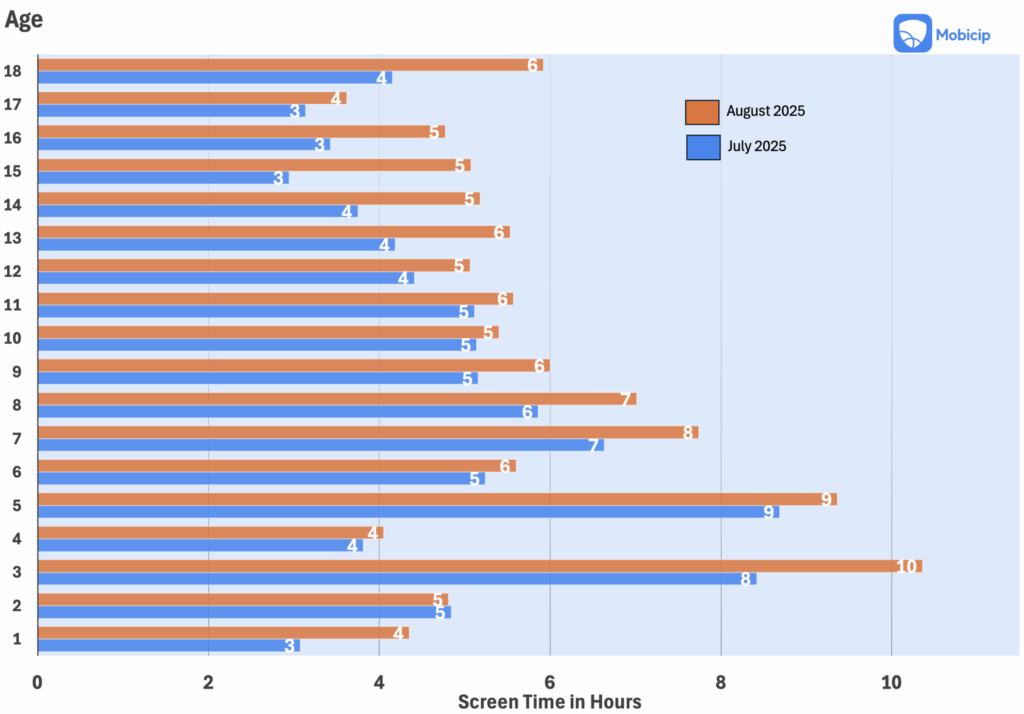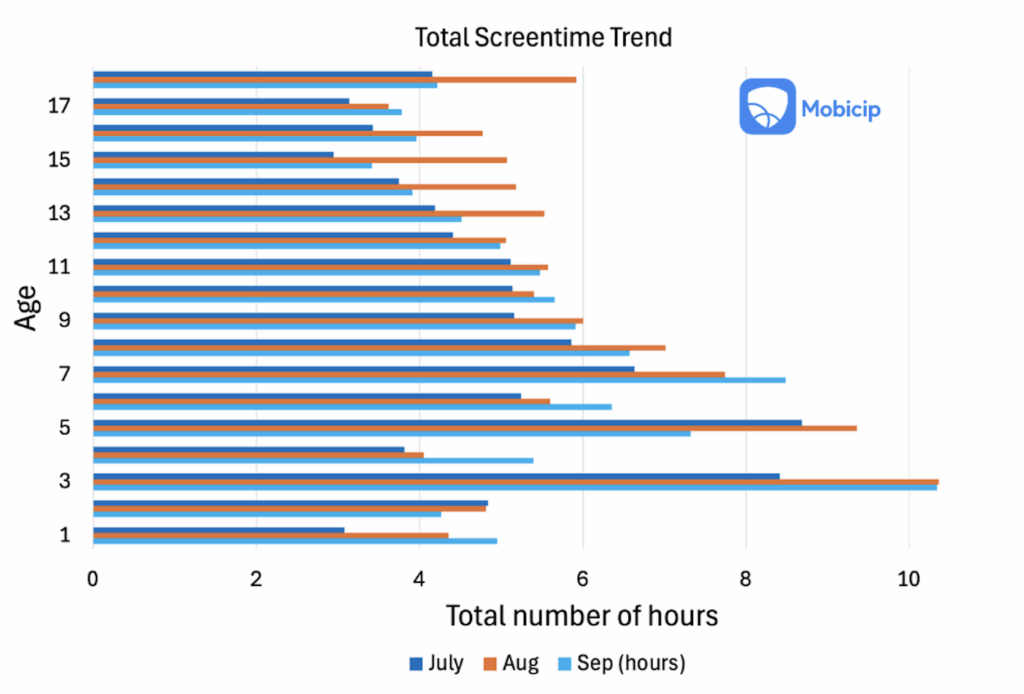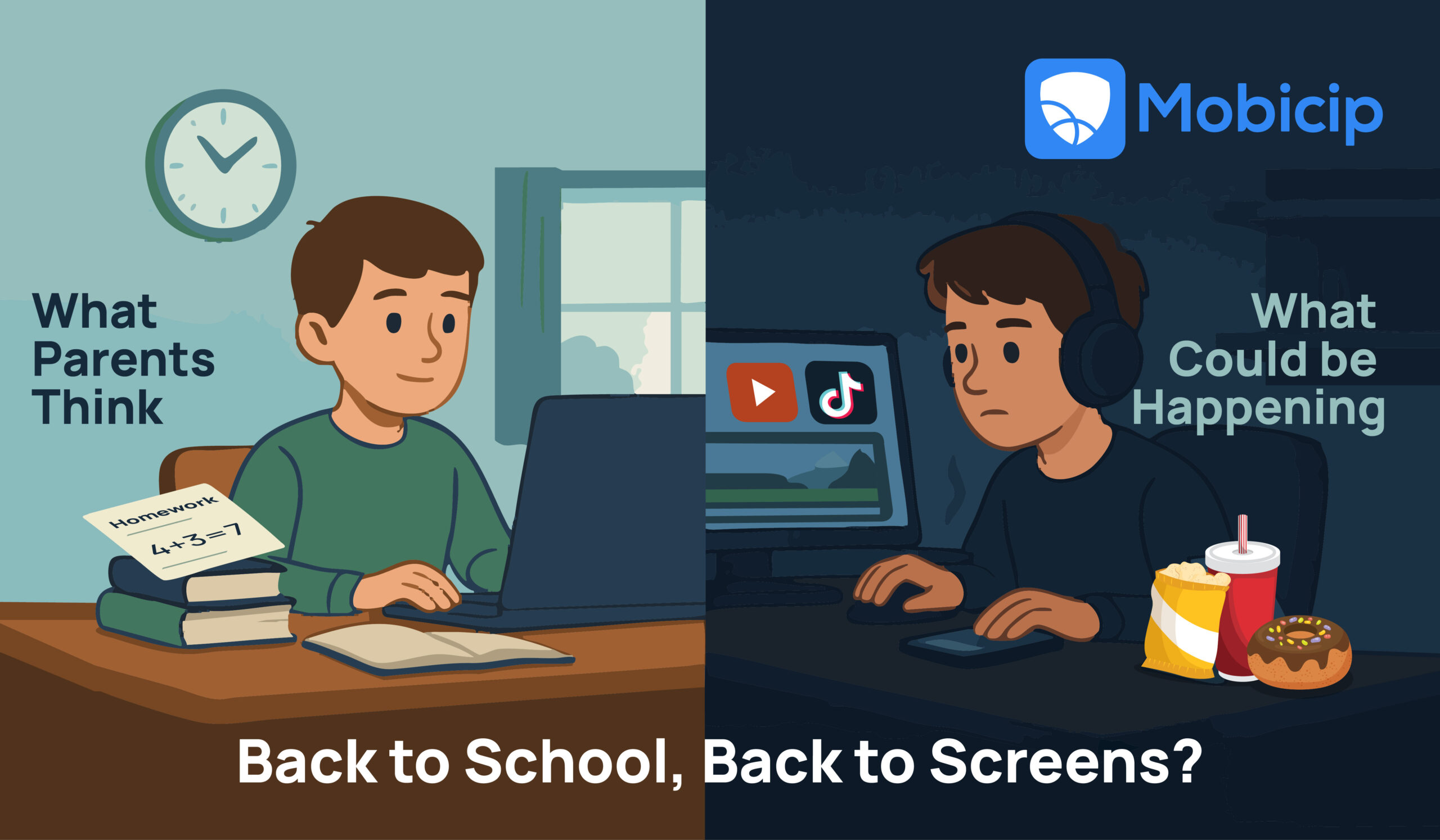Inside Kids’ Screens: July 2025 Trends from Mobicip
What are kids really doing online? The July 2025 Trends Report from Mobicip provides insights into how children and teens are spending their screen time. From gaming and streaming to messaging and browsing, this month’s screen time report highlights the top apps by age group, giving parents a window into kids’ digital lives.
About This Report
Each month, Mobicip analyzes anonymized screen time data from thousands of families to uncover how children and teens are spending time on digital devices. From the most popular apps to platforms with the highest usage, this report offers actionable insights into current trends, age-specific behaviors, and emerging parental concerns. Our goal is to help families make informed decisions and support healthy digital habits for kids in an evolving tech landscape.
Average Screen Time by Age
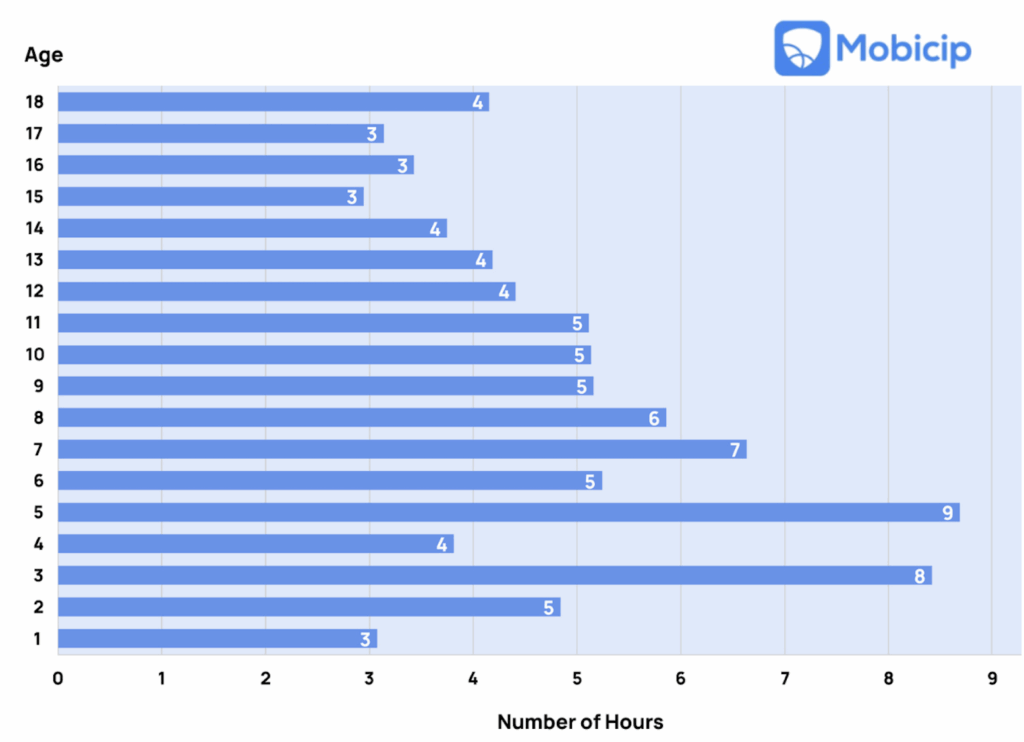
A detailed look at the July 2025 Trends reveals that children between ages 3 to 5 recorded the highest screen time – alarmingly high even for our analysts. This is often due to their exposure to digital games, educational apps, and streaming content, often used as both learning tools and entertainment.
From ages 6 to 15, screen time gradually declines, likely influenced by school routines, extracurricular activities, and increased parental oversight.
Interestingly, teens aged 16 to 20 show a moderate but steady rise in screen time. The increased use of social media, communication tools, and streaming platforms is likely driving this trend.
At age 22, we observe another spike, likely representing college-age users who use devices for both productivity and leisure, such as watching videos, attending online classes, or managing social lives.
Time Spent by Category
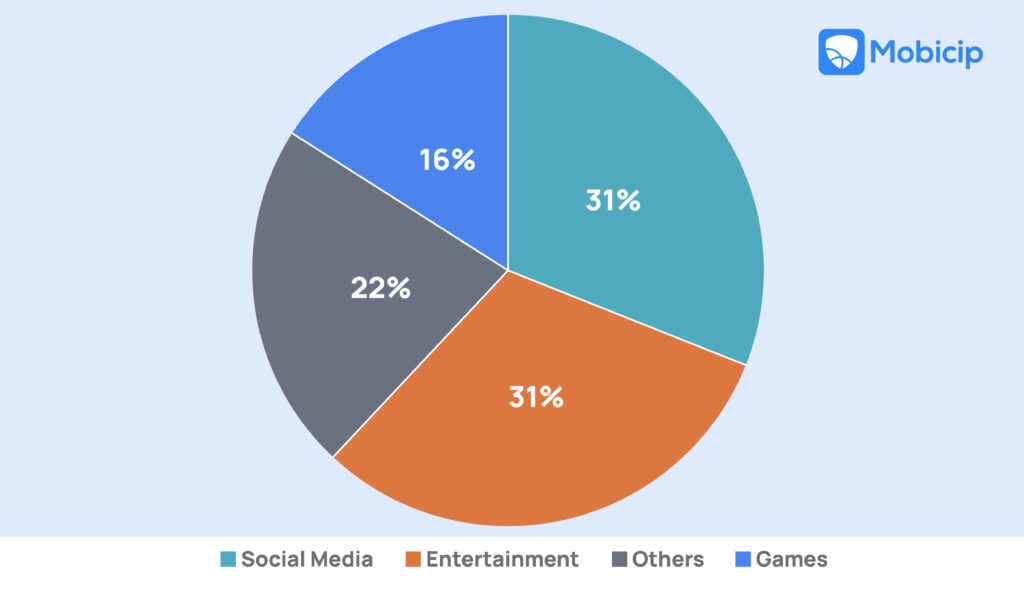
Children and teens spend a combined 62% of their screen time on social media (31%) and entertainment (31%). This shows a clear inclination toward passive engagement and social connection.
Games account for just 16%, suggesting a decline in standalone gaming in favor of platforms that blend interaction and content.
The remaining 22% includes education, messaging, and utility apps.
Top Apps by Age Group

Roblox and YouTube dominate between ages 6–10, reflecting a preference for interactive play and endless video content.
11–13 year olds show a marked shift toward Musically/TikTok and Instagram. This indicates a growing desire for social expression and identity formation.
By ages 14–17, Teens embrace Snapchat, Instagram, Spotify, and WhatsApp for communication and self-curation, using these platforms to connect with peers and explore interests.
Parental Concerns – Most Blocked Apps
Mobicip data shows that parents are highly active in restricting access to potentially harmful or addictive apps:
- TikTok and Clones: Including TikTok Lite, Likee, and Musically Live Wallpaper, were heavily blocked due to safety and content concerns.
- Snapchat & Picaboo: Blocked for their disappearing messages and location-sharing.
- Reposting & Download Tools: Like TikSaver and RepostTok were flagged to limit re-sharing of content.
- Mainstream Platforms: Instagram, Facebook, and YouTube were also restricted, highlighting concerns even with widely accepted platforms.
- Messaging & Dating Apps: WhatsApp, Telegram, Kik, and Tinder were commonly blocked to prevent unmonitored or inappropriate interactions.
- Streaming Apps: YouTube Kids, Crackle, and Popcornflix saw restrictions to limit binge-watching.
Device Usage

The overwhelming lead of iOS suggests a growing preference among parents and schools for Apple’s ecosystem. This is likely due to its intuitive interface, robust parental controls, and widespread use of iPads in educational settings. It also reflects the high penetration of iPhones among families in higher-income brackets, where children often inherit older devices. Android’s strong second place reflects its affordability and availability, particularly in larger households or regions with broader device diversity.
Windows continues to hold its ground, likely driven by its dominance in schools and for gaming, especially for older children who use PCs for Minecraft, Roblox, or online learning platforms. The low usage of macOS compared to Windows may be due to cost barriers and the perception of Macs as productivity devices more suited for adults.
What’s particularly striking is that Kindle usage outpaces macOS. This suggests that parents of younger children are intentionally choosing low-cost, kid-friendly tablets like the Kindle Fire, which offer curated content and built-in controls.
Overall, the July 2025 Trends reflect how socioeconomic factors, device ecosystems, and age-specific needs shape children’s digital habits across platforms.
Why is this information important?
As technology continues to evolve, so do children’s digital habits. Each month’s data helps parents understand how young users interact with their devices and which platforms dominate their attention. By staying informed and proactive, families can encourage meaningful screen time, set healthy boundaries, and protect children from digital risks. Stay tuned for next month’s insights as we continue tracking and supporting smarter, safer screen use.



